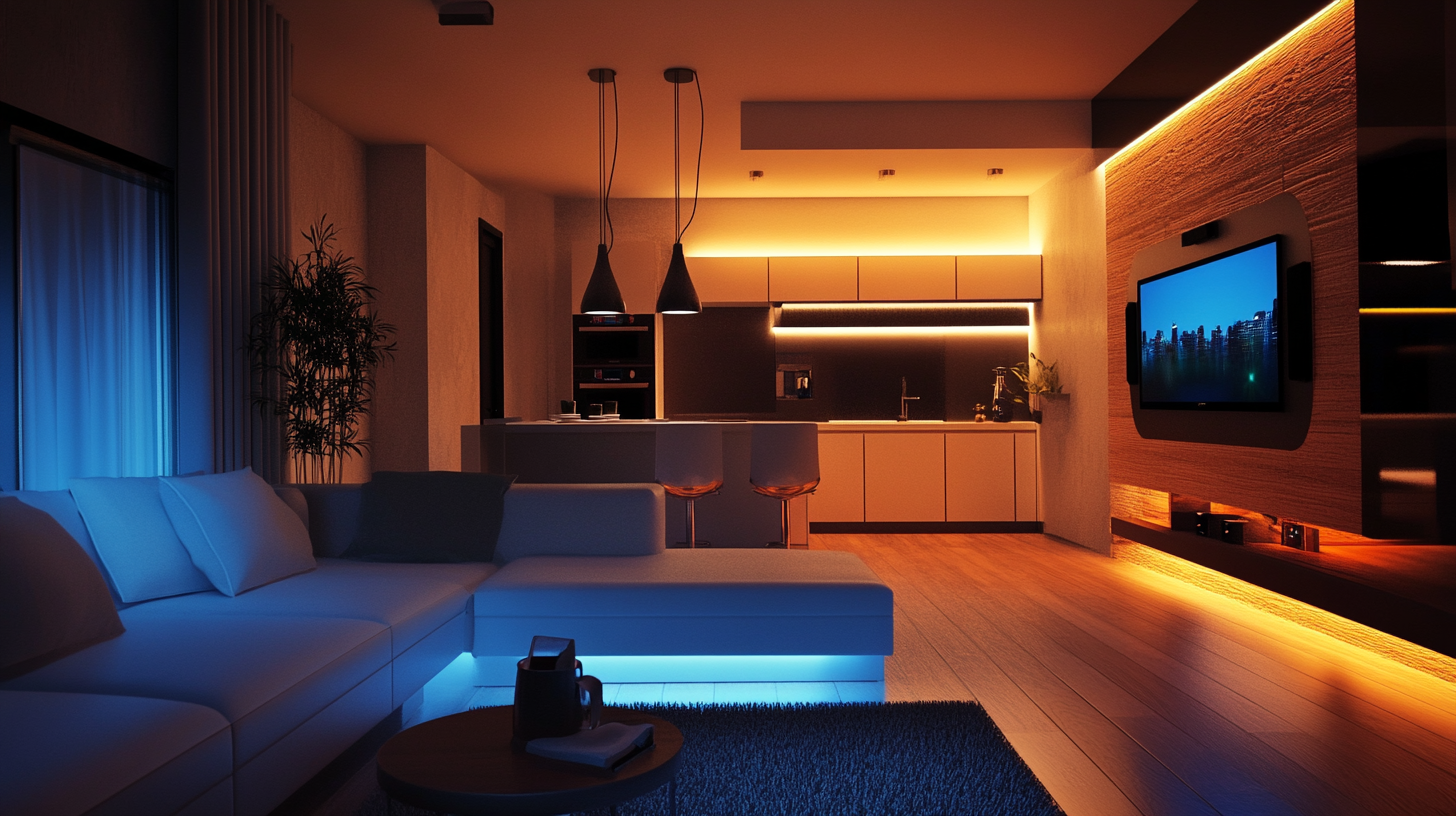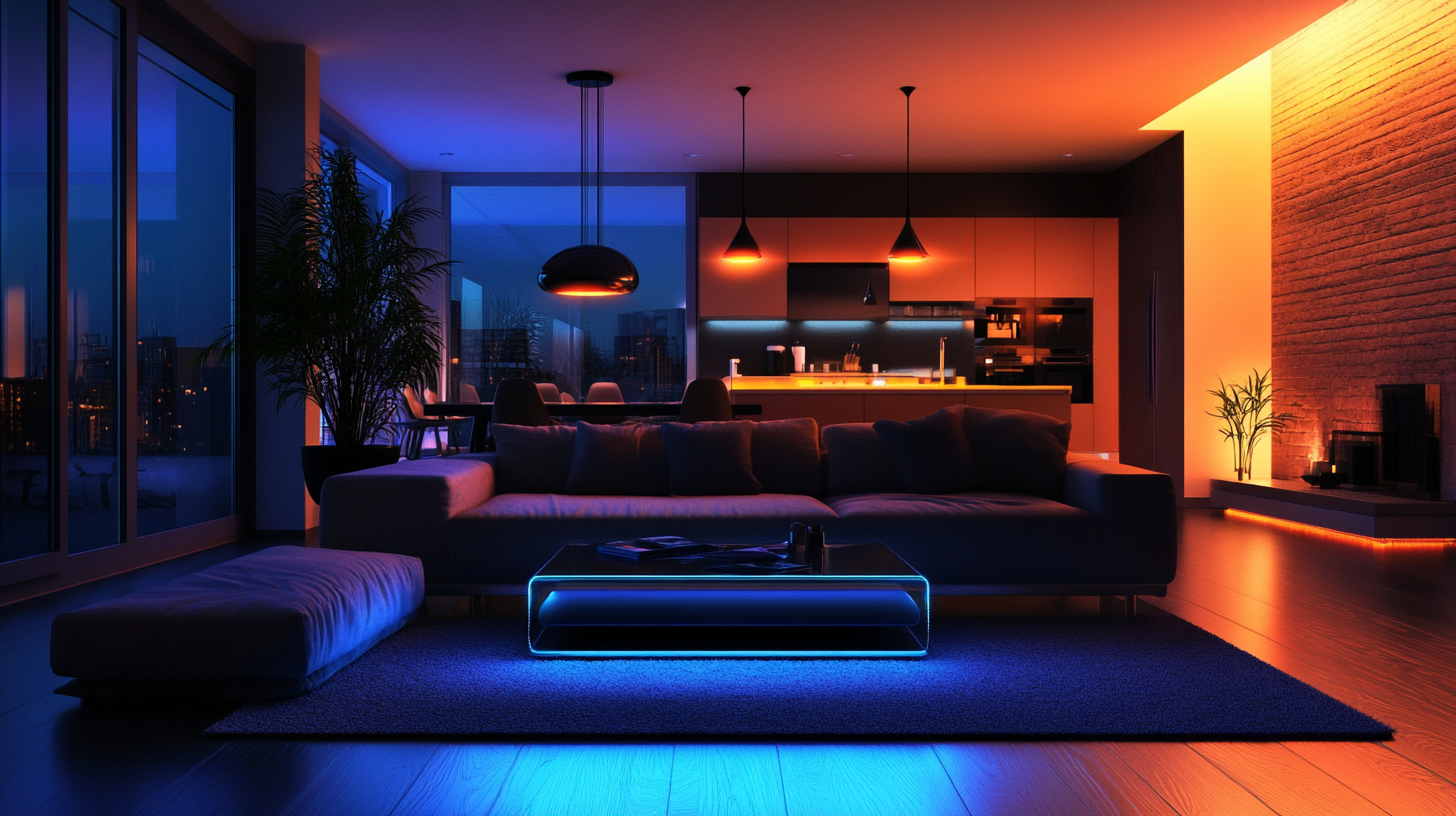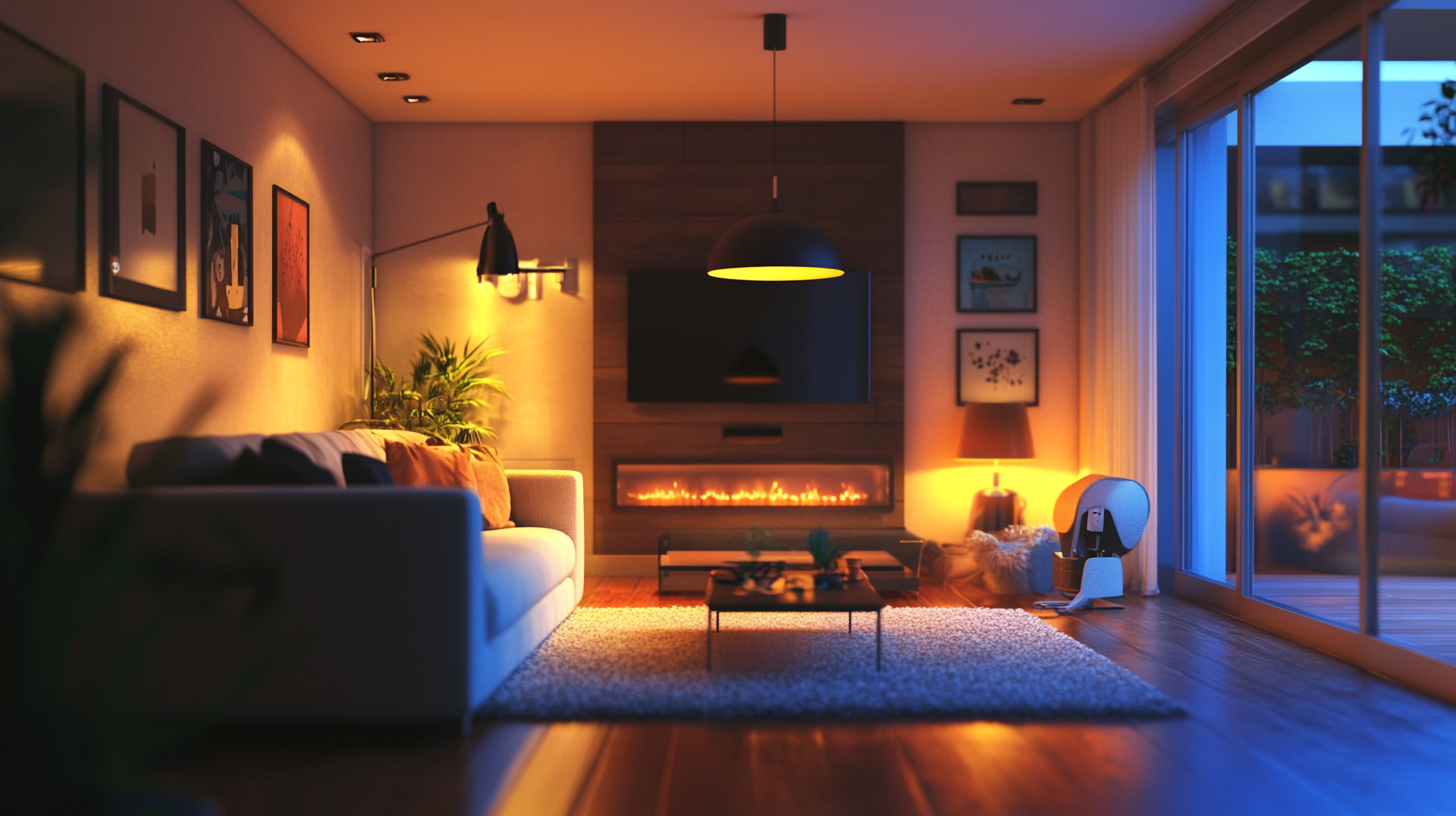Ultimate Guide to Choosing the Best Smart Lighting Systems for Your Home
As we move towards 2025, the demand for Smart Lighting Systems is set to increase significantly, driven by a growing interest in energy efficiency and smart home technology. According to a report by Grand View Research, the global smart lighting market is expected to reach $24.3 billion by 2026, with a compound annual growth rate (CAGR) of 23.6% from 2019 to 2026. This remarkable growth highlights the importance of adopting intelligent lighting solutions that not only enhance the ambiance of homes but also contribute to energy savings and sustainability. Homeowners are increasingly recognizing the value of integrating Smart Lighting Systems into their living spaces, empowering them with enhanced control, automation, and customization options. In this ultimate guide, we’ll explore the various factors to consider when choosing the best smart lighting solutions for your home to ensure an informed decision that aligns with contemporary technological trends and personal lifestyle preferences.

Benefits of Comprehensive After-Sales Service for Smart Lighting Systems
When selecting smart lighting systems for your home, it’s essential to consider not just the technology and features but also the support you’ll receive after your purchase. Comprehensive after-sales service can significantly enhance your experience and ensure that your investment truly pays off. Quality service provides you with peace of mind, knowing that any issues or questions you may have can be addressed promptly and effectively.
Having access to reliable customer support means you can quickly resolve issues such as connectivity problems or software glitches. Moreover, manufacturers that prioritize after-sales service often offer regular updates, which can enhance the performance and security of your smart lighting systems. These updates help to ensure that your home remains at the forefront of smart technology, allowing you to enjoy the latest features and improvements without needing to replace your system frequently.
Additionally, a robust after-sales service can include installation assistance and personalized support to help you maximize the functionality of your smart lighting. Whether it’s troubleshooting, setup guidance, or maintenance tips, comprehensive service can make your smart lighting experience much smoother. In essence, investing in smart lighting systems with strong after-sales support can significantly enhance your home automation experience, ensuring you can fully enjoy the benefits of modern technology.
Understanding Maintenance Costs and Their Impact on Smart Lighting Choices
When choosing a smart lighting system for your home, understanding the maintenance costs is essential to making an informed decision. Smart lighting solutions, while convenient and energy-efficient, often come with hidden costs that can accumulate over time. Regular maintenance, software updates, and potential repairs for smart features can affect your overall budget. It's crucial to consider these expenses beyond the initial installation price to avoid surprises down the line.
Additionally, the type of smart lighting system you choose can influence maintenance costs. Some systems offer extensive customer support and more durable components, which may result in lower long-term costs. On the other hand, budget-friendly options might require more frequent maintenance or replacement of smart bulbs and connectors, increasing your overall expenditure. Evaluating the longevity and support available for different systems can guide you toward a choice that not only meets your lighting needs but also aligns with your long-term financial strategy.
Smart Lighting Maintenance Costs vs. Initial Costs
Evaluating Warranty Options: What to Look for in Smart Lighting Products
When selecting the best smart lighting systems for your home, understanding warranty options is crucial. Smart lighting products can range significantly in price, and a solid warranty can provide peace of mind, protecting your investment against potential defects and malfunctions. When evaluating warranty options, consider the length of coverage, as well as what is specifically included. Some brands may offer limited warranties that cover only certain components, while others provide comprehensive coverage that includes all parts and labor.
Additionally, consider the reputation of the manufacturer and their customer service support. A longer warranty from a reputable brand can indicate confidence in their product quality. Also, check if the warranty is transferable, which can be beneficial if you decide to sell your home or the lighting system in the future. Lastly, pay attention to the warranty claims process; a straightforward, hassle-free process can save you time and stress should you need to make a claim. Being well-informed about these warranty aspects can greatly enhance your satisfaction with your smart lighting investment.

Cost-Effective Solutions: Long-Term Savings with Smart Lighting Maintenance
When it comes to upgrading your home with smart lighting systems, one of the most significant advantages is the potential for long-term savings. Investing in energy-efficient LED bulbs and smart fixtures can drastically reduce your electricity consumption compared to traditional lighting. These modern systems often come with features that allow you to control brightness, colors, and schedules, ensuring lights are only on when needed. This level of efficiency not only cut down on your monthly energy bills but also extends the lifespan of the bulbs, leading to fewer replacements and lower maintenance costs.
Maintenance is another critical aspect where smart lighting systems showcase their cost-effectiveness. With integrated monitoring capabilities, many smart lighting systems can alert homeowners when a bulb is nearing the end of its life or when it requires attention, preventing unexpected failures. Some systems even allow for remote troubleshooting, meaning that in many cases, you can resolve issues without calling in an expensive technician. By adopting a proactive approach to upkeep, you can enjoy peace of mind and reduce long-term expenses, making smart lighting a wise investment for the future of your home.
Ultimate Guide to Choosing the Best Smart Lighting Systems for Your Home - Cost-Effective Solutions: Long-Term Savings with Smart Lighting Maintenance
| Lighting System | Initial Cost ($) | Annual Energy Cost ($) | Lifespan (Years) | Maintenance Cost/year ($) | Estimated Savings Over 10 Years ($) |
|---|---|---|---|---|---|
| LED Smart Bulbs | 100 | 15 | 22 | 5 | 200 |
| Smart Light Strips | 80 | 10 | 20 | 4 | 150 |
| Smart Ceiling Lights | 150 | 20 | 15 | 6 | 180 |
| Smart Outdoor Lights | 120 | 25 | 10 | 8 | 130 |
| Smart Sensor Lights | 90 | 12 | 18 | 3 | 160 |
Comparing Repair Services: In-House vs. Third-Party Providers for Smart Lighting
When it comes to maintaining your smart lighting systems, choosing between in-house repair services and third-party providers can significantly impact the overall efficiency of your home setup. A recent report from the Smart Home Market reveals that nearly 65% of homeowners prefer relying on in-house services due to their convenience and familiarity with the specific systems installed. These providers often offer quicker response times, personalized service, and an in-depth understanding of the unique setup of a home, which can be crucial for ensuring optimal functionality and addressing specific customer needs.

However, third-party providers present their own advantages. According to a study by TechNavio, the growth of the smart lighting market is expected to surpass $15 billion by 2025, leading to an increasing number of specialized service providers entering the field. These companies often bring innovative solutions and competitive pricing, potentially delivering superior technological insights and options that in-house services may lack. This competitive landscape allows consumers to benefit from diverse perspectives on smart lighting repairs, encouraging improved standards across the board and driving down costs.
Ultimately, the choice between in-house and third-party services depends on individual preferences, the complexity of the system, and potential cost implications. Careful consideration of these factors will lead homeowners to the best decision for their smart lighting maintenance.






